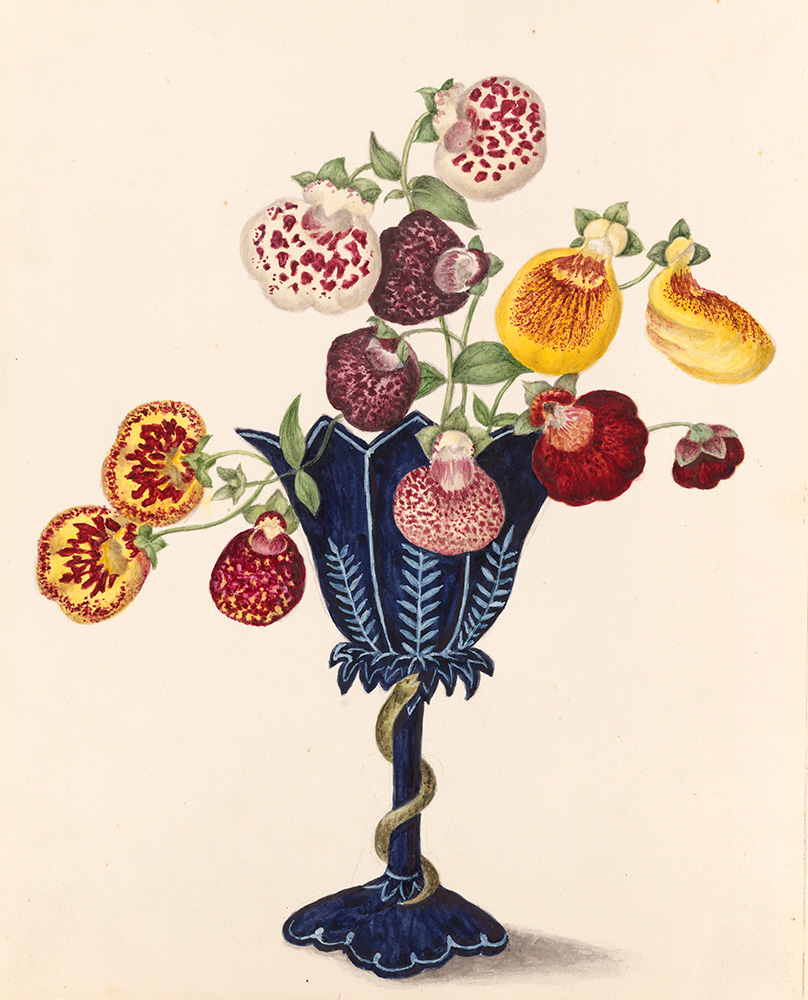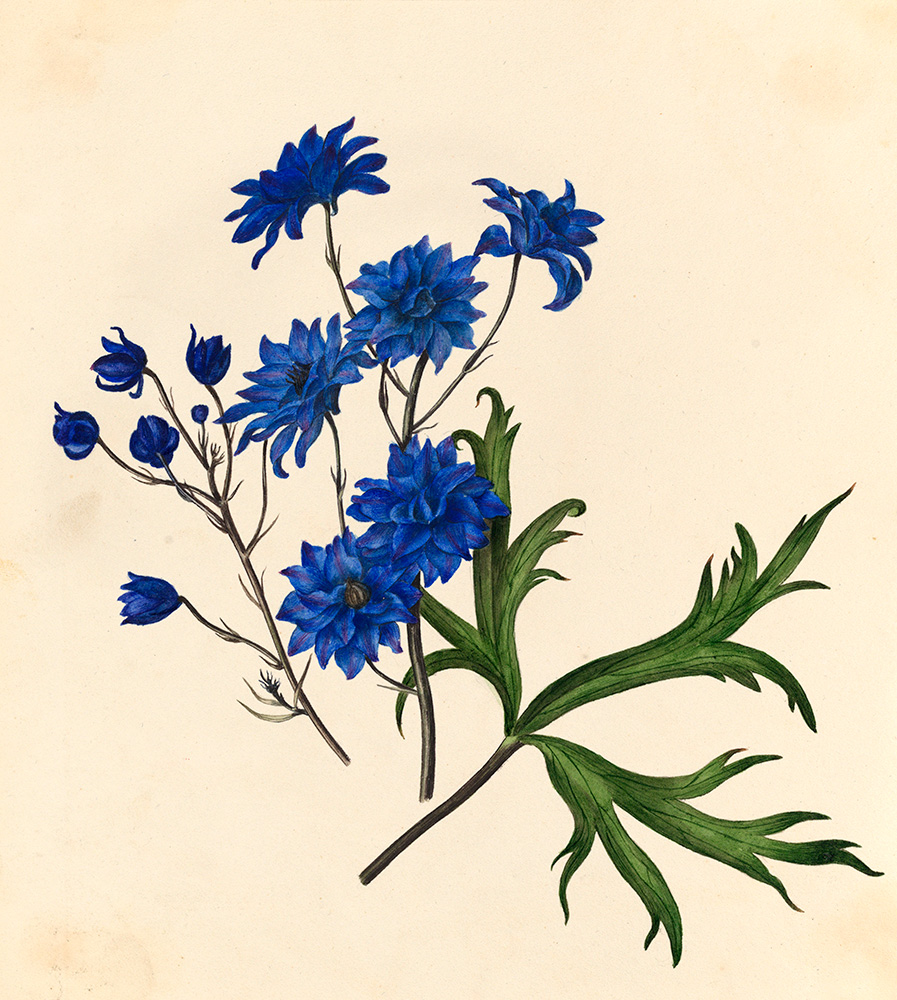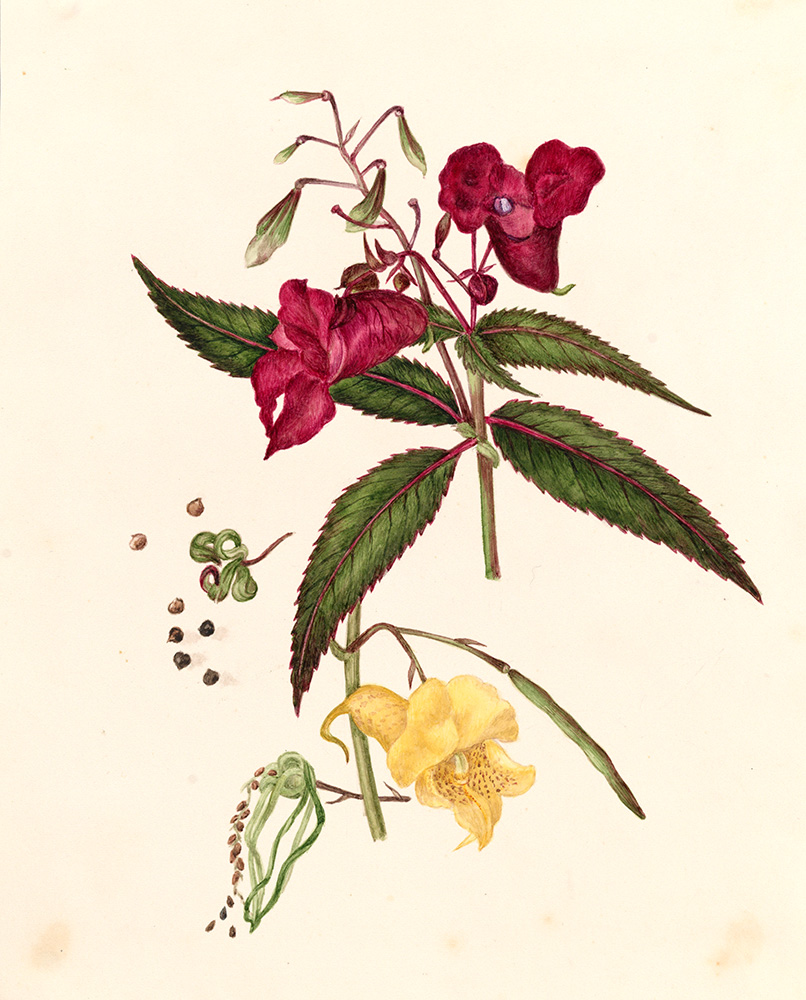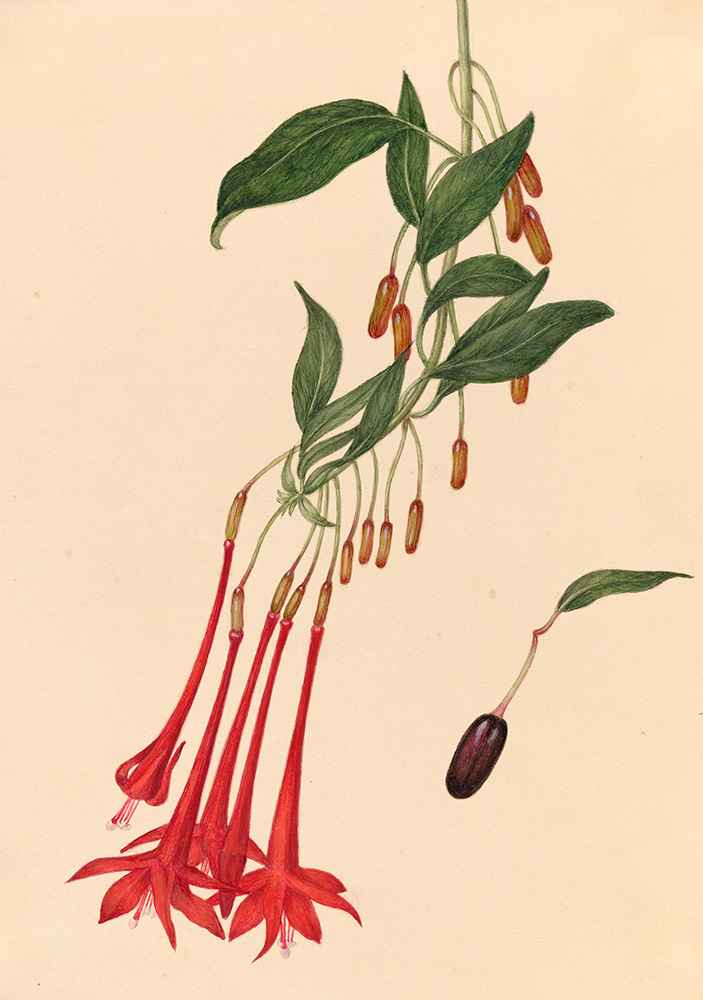Insights into our collections
Petals and Pigments: Rediscovering Caroline Maria Applebee’s Botanical Art Legacy
In the quiet corners of the RHS Lindley Library lies a treasure trove of 19th-century floral artistry – over 300 delicate watercolours by a woman whose name is barely known beyond the margins of botanical art history
In the quiet corners of the RHS Lindley Library lies a treasure trove of 19th-century floral artistry – over 300 delicate watercolours by a woman whose name is barely known beyond the margins of botanical art history: Caroline Maria Applebee. Her paintings, vibrant with colour and botanical precision, offer more than aesthetic pleasure – they are a window into the horticultural passions and social fabric of her time.
Caroline Maria Applebee, 7 Varieties of Caleolaria, 1852. A/APP/V.3/70
A Life in Bloom
Born in 1787, Caroline Maria Applebee was the daughter of Reverend John Applebee and spent her early years in Essex. After her father’s death in 1825, she moved to Colchester, where she lived independently on her inheritance. Far from a reclusive artist, Applebee was a lively member of her community – attending dances, supporting charities, and entering local plant exhibitions. She never married or had children, and upon her death in 1854, her floral legacy passed to her niece, Louisa Williams.
Her earliest known painting dates to 1808, and over the next four decades, she produced a remarkable collection of botanical illustrations. These works, though unsigned and largely uncelebrated in her lifetime, now serve as a vivid record of the plants that captivated the Victorian imagination.
Caroline Maria Applebee, Double Bee Larkspur, 1820. A/APP/V.1/114
The Art of Flower Painting
In Applebee’s day, flower painting was more than a genteel pastime – it was a socially acceptable gateway for women into the worlds of science and art. Flowers, considered suitably “feminine” subjects by Victorian society, were readily available and rich in symbolic and scientific interest. Instructional books like George Brookshaw’s A New Treatise on Flower Painting guided aspiring artists in the use of pigments, composition, and technique.
Applebee’s style reflects the conventions of her era, yet her work stands out for its meticulous detail and compositional flair. There’s no evidence she copied other artists, suggesting a confident hand and a discerning eye. Her paintings are not just pretty – they’re precise, capturing the botanical nuances of each bloom.
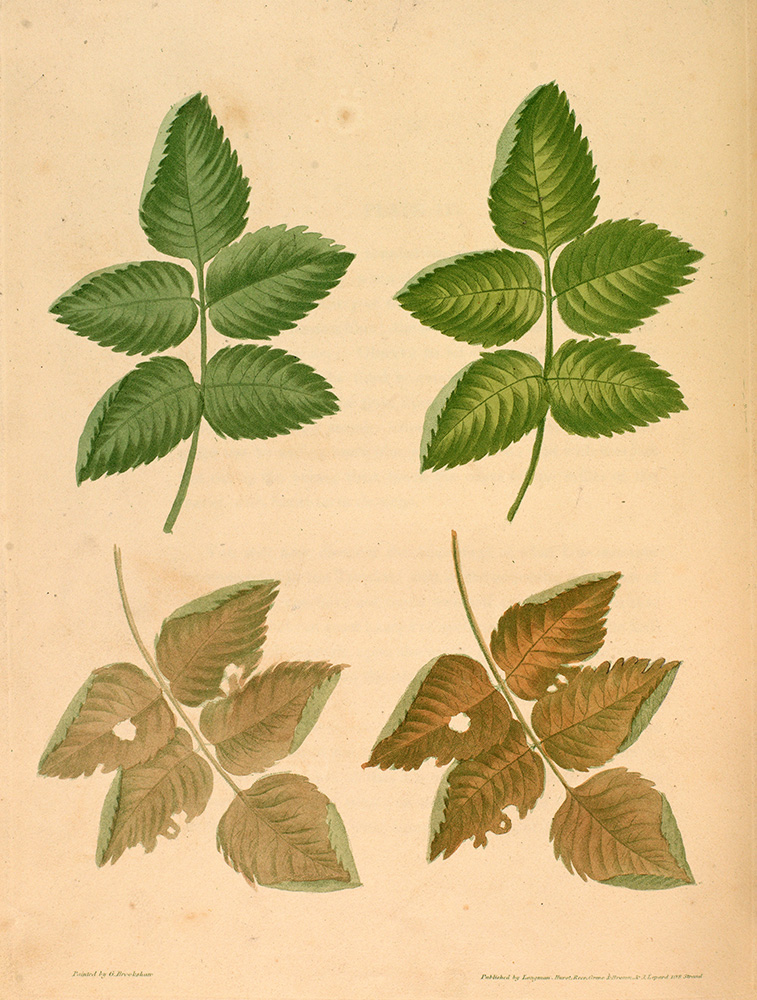
A plate from Brookshaw’s A New Treatise on Flower Painting, showing how to paint rose leaves. Each colour plate has a matching uncoloured plate where the owner can copy the colour illustration.
A Garden of Imports
Applebee’s portfolio reads like a catalogue of Victorian horticultural fashion. Her subjects include rhododendrons, camellias, and Himalayan balsam – plants that were, at the time, novelties to British gardeners. The 19th century saw many plant collectors travel around the world in search of promising specimens for British gardens and for scientific study. The Horticultural Society of London – as the RHS was then known – commissioned 12 collectors to make such journeys. The result was an explosion in the range of plants grown in British gardens.
Some of the flowers Applebee painted would have been familiar to keen gardeners of the day, having appeared in popular gardening books like Robert Sweet’s British Flower Garden and Jane Loudon’s Ladies’ Flower-Garden series. However, this was a pastime for the wealthy, as expensive glasshouses and stove houses were required to ensure the survival of many imported plants in the cold British climate.
Caroline Maria Applebee, Impatiens Glanduligira, 1842. A/APP/V.3/2
Behind the Garden Walls
Despite the richness of her work, much about Applebee’s life remains a mystery. Census records show her living at 53 Crouch Street in Colchester – a “very desirable small freehold residence” with two walled gardens, according to an 1866 sale catalogue. It’s easy to imagine her tending to her plants there, sketchbook in hand.
Nearby, the Colchester and Essex Horticultural and Botanical Gardens, opened in 1823, may have provided further inspiration. Flower shows were a regular feature of local life, and in 1850, Applebee won second prize in the “Plants in Pots” category with a ‘Eucoma punctata’ [Eucomis comosa] at a show held on the estate of George Round at East Hill House.
Pelargoniums and Fuchsias: Victorian Obsessions
Two plant groups dominate Applebee’s later work: pelargoniums and fuchsias. Pelargoniums, originating from southern Africa, were prized for their showy flowers and ornamental foliage. By the 1840s, they had become “florists’ flowers,” cultivated for competition and admired for their hybrid diversity. Applebee’s paintings of varieties like ‘Little Ellen’, ‘Prince Regent’, and ‘Princess Augusta’ capture the exuberance of this trend.
Fuchsias, meanwhile, arrived in Britain from South America and quickly became fashionable despite early misconceptions about their growing conditions. Applebee’s depictions of Fuchsias ‘Fulgens’, ‘Moneypennii’, and ‘Serratafolia’ (now known as Fuchsia denticulata) reflect the plant’s rising popularity and the Victorian appetite for botanical novelty.
Caroline Maria Applebee, Seedling Fuschia (Fuschia), 1846. A/APP/V.3/39
A Legacy in Watercolour
Caroline Maria Applebee may not have sought fame, but her work endures as a testament to the intersection of art, science, and society in the 19th century. Her paintings are more than decorative – they are documents of a time when flowers were both a personal passion and a public pursuit.
Discover more
Caroline Maria Applebee paintings on RHS Digital Collections
Author
Charlotte Brooks, Art Curator, RHS Lindley Library
Published
29 May 2025
Insight type
Short read
